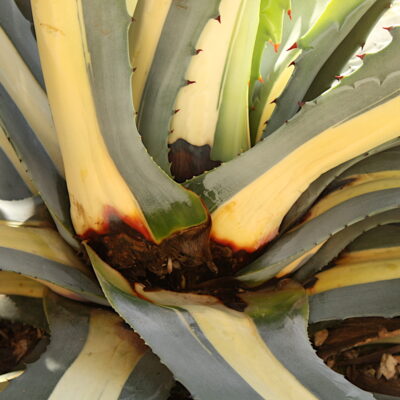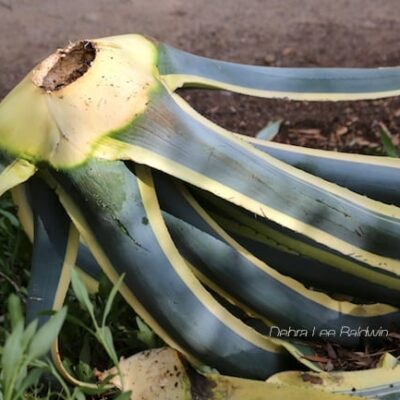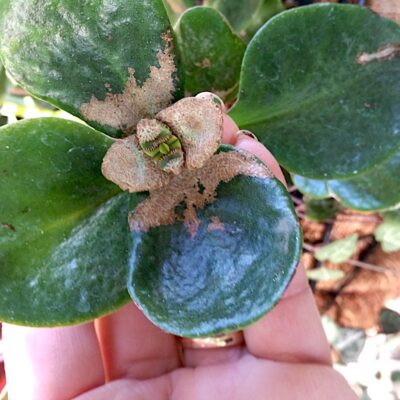
Succulents Snout Weevil Attacks Besides Agaves
The agave snout-nose weevil has definite preferences. It likes Agave americana (century plants), especially those that are variegated (yellow or white striped). It's plump white larva is reputedly the grub preserved in tequila bottles to demonstrate high alcohol content. (Perhaps that's where the term "proof" came from.) But that may be a thing of the past, or perhaps apocryphal.
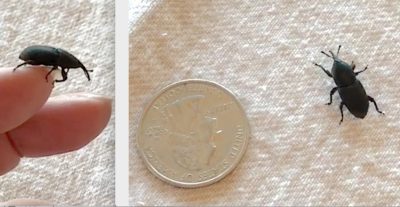
Yet the evil weevil isn't choosy. It'll go after all agaves, and even related genera. So when you're drenching your agaves as a snout-weevil preventative, slosh a little around these agave relatives as well:
Beaucarnea (ponytail palm)

Beaucarnea recurvata
Not a palm, this strappy-leaved Mexican native is considered a succulent due to its ability to store moisture in its bulbous trunk. These odd trees grow to 20+ feet tall with bases that may expand to 8 feet or more in diameter.
Furcraea

Variegated furcraeas
At first glance, these fountainlike succulents appear to be agaves, but leaves are different. Furcraea foetida, which does best in a coastal climate, has spineless, somewhat wavy leaves that suggest wide ribbons---especially yellow variegates. Another common species, F. macdougalli, has stiff, narrow gray-green leaves, forms a trunk over time, and grows to 20 feet or more.
Hesperaloe
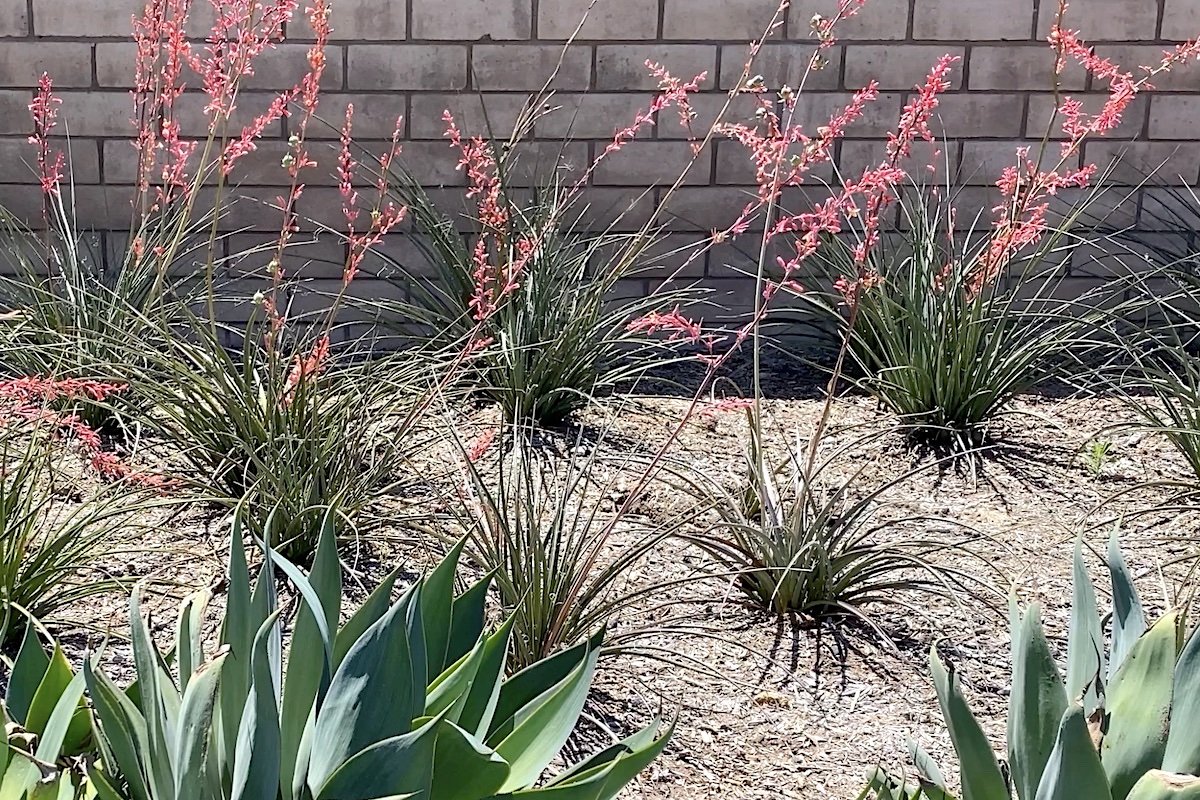
Hesperaloe parviflora with Agave attenuata
Native to northern Mexico is Hesperaloe, often mistaken for a yucca because of its stiff, strappy foliage. The most popular species, above, is commonly called red yucca (or in Arizona, "brake lights.") Plants are easy-care, low-water and bloom all summer long. Leaves have curly white filaments along their margins. Cold hardy to zero degrees.
Mangave
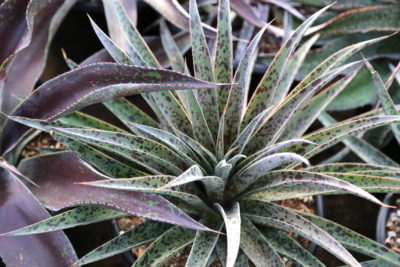
Mangaves
If plants can be fashionable, the latest to strut the runway are mangaves, intergeneric hybrids of Manfreda and Agave. Introduced during the first decade of the 21st century, mangaves are noteworthy for their purple-spotted, blotchy green and gray-green leaves.
Yucca

Yucca aloifolia
Yuccas grow from Central America to Canada. Species vary from stemless rosettes with long, narrow leaves to 40-foot trees with foliage like bayonets. Yuccas are ornamental, often sharply tipped, spiky in silhouette, and need little water or tending. Large bloom stalks are massed with white flowers that resemble whipped cream.
Other at-risk succulents

Pachycereus (Stenocereus) marginatus, Mexican fence post
Per cactus expert Mark Fryer: "Mexican fencepost is one of several columnar cacti that these buggers will attack and colonize. Prevention is key, as by the time the plants are infected with secondary fungal problems (like black spot) it's usually too late to salvage."
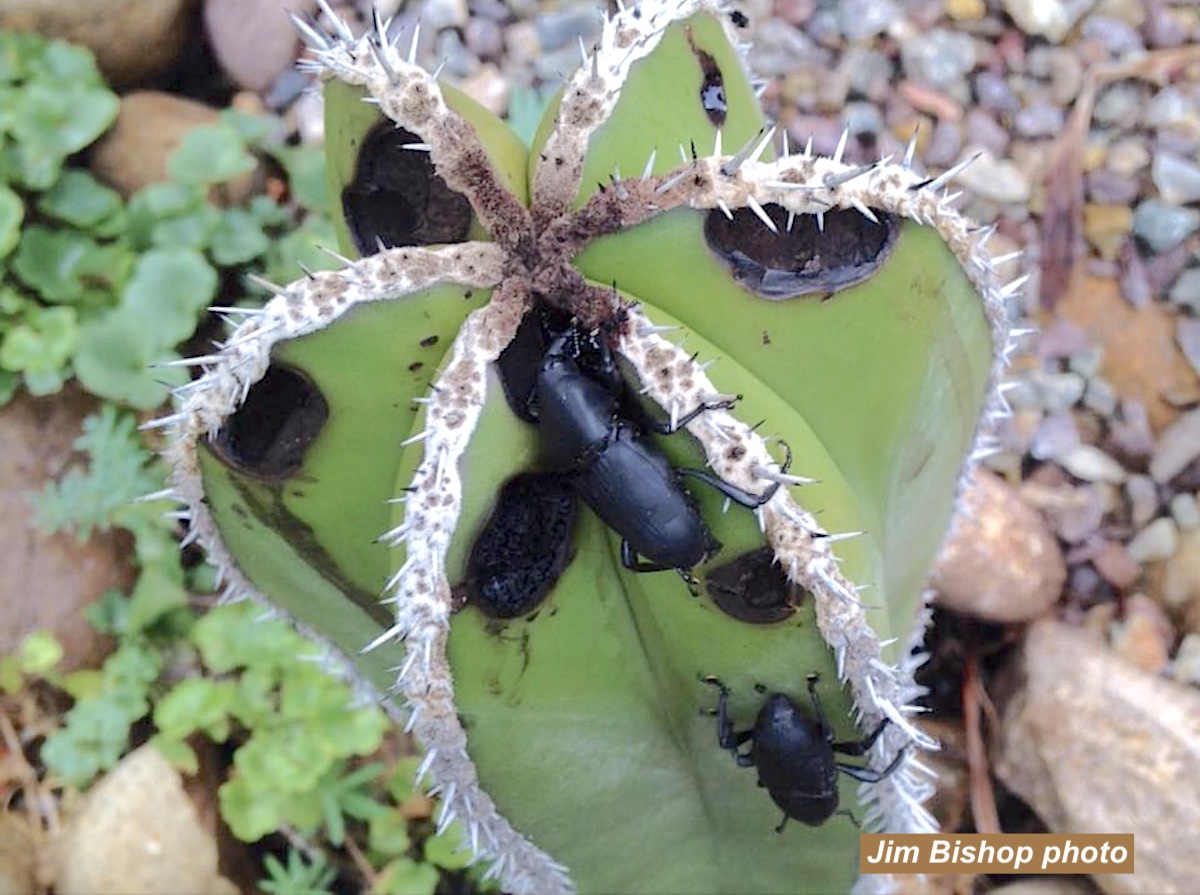
Snout weevil attacks Mexican fence post cactus
Spread the word
Feel free to copy-and-paste this info onto your NextDoor site, and (please!) use it to notify your garden club and friends. -- Debra
GARDEN PEST ALERT: The agave snout-nosed weevil exists in greater numbers and is more active than ever before. Don't wait for signs of infestation; take preventative measures now to protect your agaves, furcraeas, beaucarneas, yuccas and mangaves. And please, don't let your yard become a breeding ground for weevils! Learn More: https://debraleebaldwin.com/caring-for-succulents/agave-snout-weevil-prevention-treatment/
Agave Snout Weevil Prevention and Treatment
Agave snout-nosed weevil is a half-inch-long black beetle with a downward-curving proboscis that enables it to pierce an agave’s core, where it lays its eggs. Grubs hatch, consume the agave’s heart, then burrow into the soil to pupate.
Uh-oh, Is My Succulent Sick? Common pests, diseases and problems, plus solutions
Succulent Pests, Diseases and Problems Keep your succulents healthy, happy and looking their very best WEEVIL ALERT: The agave snout-nosed weevil is a major pest in ever-increasing numbers. Don’t wait for signs of infestation; take preventative measures NOW to protect your agaves, furcraeas, yuccas, beaucarneas and mangaves. Please don’t let your yard become a breeding ground for pests that move…
Succulent Pests and Problems Q&A Forum
Are pests or mysterious maladies causing problems with your succulents? This page is a forum for you to ask questions, leave comments and share what works for you. Others can see and benefit from the answers. Your own tried-and-true solutions are welcome, too!

